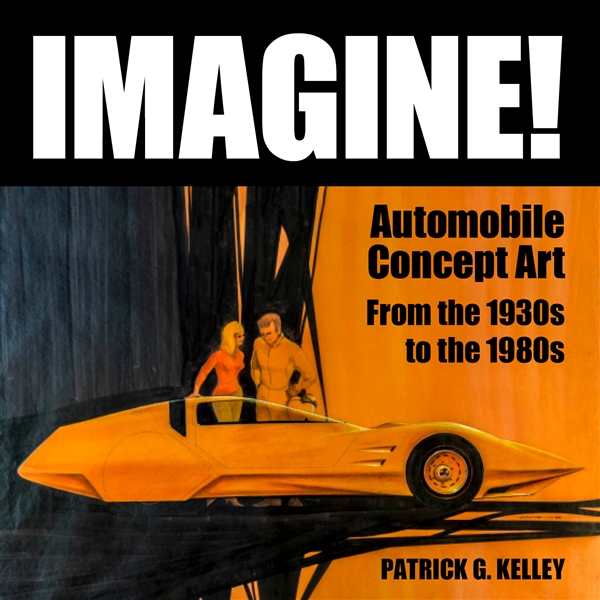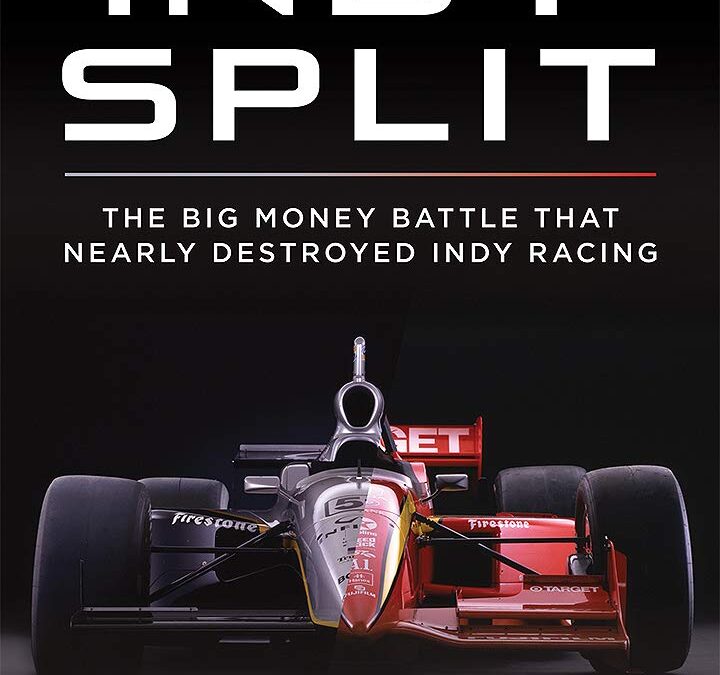
Indy Split is a fascinating, authoritative and overdue account of the big money battle that nearly destroyed the sport of Indy car racing.
In the new book, long-time motorsports reporter John Oreovicz dives deep into the divisive battle between CART and the Indy Racing League. With insightful reporting, Oreovicz recounts the political infighting within the industry which climaxed with a 12-year “Split” from 1996 to 2007 between competing forms of Indy car racing and prevented the sport from achieving its potential.
The book traces the roots of Indy car racing’s dysfunction, which began in 1945 when Tony Hulman rescued the Indianapolis Motor Speedway from potential redevelopment. Over the next 75 years, the Hulman-George family used the stature of the Speedway to carve out a powerful position in American auto racing that sometimes resulted in conflict with Indy car competitors. A volatile period in the late 1970s sparked the formation of Championship Auto Racing Teams (CART), and tensions ramped up even more when Hulman’s grandson, Tony George, assumed power in 1990.
In unprecedented detail, Indy Split uncovers how the Split forced Indy car fans, sponsors, broadcasters and participants to choose sides. The book brings to light the confusion and animosity which caused unnecessary damage to the sport, and covers how negotiations driven by legendary racer Mario Andretti and actor/racer Paul Newman ended the Split in 2008, only to have George to walk away less than three years later. The long struggle for stability was finally resolved in 2020 when Roger Penske acquired IMS and the IndyCar Series, securing a bright future for the Speedway, the Indy 500, and the sport.
Longtime motorsports reporter John Oreovicz began attending the Indianapolis 500 as a teenager in the late ‘70s, allowing him to witness the sport’s growth as an avid fan before documenting its decline as a journalist. With a foreword by Motorsport Hall of Fame inductee Robin Miller, arguably Indy car racing’s most vocal advocate, this is the real story of The Split from one of the sport’s most respected voices
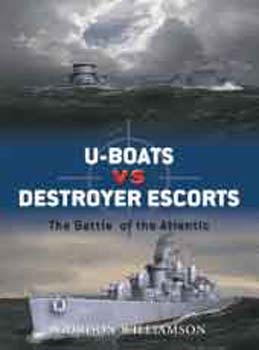
Winston Churchill claimed that the “U-boat peril” was the only thing that ever frightened him during World War II. A formidable foe, the U-boat was developed from a small coastal vessel into a state-of-the-art killer, successfully stalking the high seas picking off merchant convoy ships. It was not until the destroyer escort was introduced, alongside the development of destroyer groups with dedicated anti-submarine tactics, that there was an effective means of defence and attack against the U-boat peril.
Gordon Williamson describes the design and development of these two deadly opponents, their strengths and weaknesses and of their tactics, weaponry and training. He provides an insight into the lives of the Allied Navy and Wolf Pack crews as they played their deadly games of cat and mouse on the high seas, gambling not only with their lives but with the fate of their nations.
Destroyer Battles
Sumner- Gearing Class Destroy
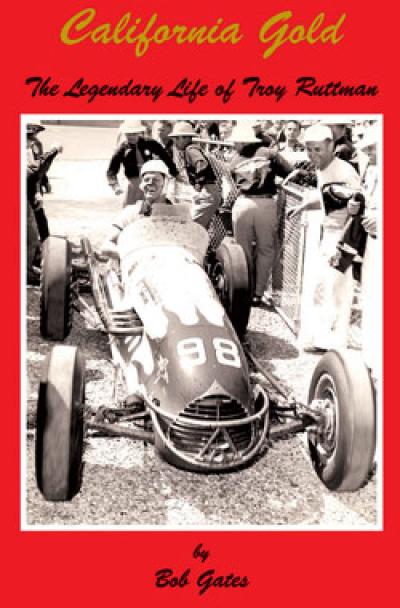
The full story of the brilliant but tortured Troy Ruttman, one of the most successful, versatile, accomplished drivers in the history of American
auto racing, who soared despite the demons of alcoholism, injury and loss.
At 15 years old, Troy started racing at Ash Kan in California and he won his first race; as a teenager, he conquered the Hills of the Midwest; and he climbed to the top of the mountain by winning the 1952 Indianapolis 500 at 22 years old.
His real success was his ability to apply the never give up attitude from the race track to life.
Hard cover, 248 pages, B&W photos from the Ruttman Family Collection.
DOUGLAS XSB2D-1/BTD-1 DESTROYE

The inspiration for the major Apple TV+ series, streaming now!
The riveting history of the American Eighth Air Force in World War II and the young men who flew the bombers that helped beat the Nazis and liberate Europe, brilliantly told by historian and World War II expert Donald L. Miller. The Masters of the Air streaming series stars Austin Butler and Callum Turner, and is produced by Tom Hanks and Steven Spielberg, the legendary duo behind Band of Brothers and The Pacific.
Masters of the Air is the deeply personal story of the American bomber boys in World War II who brought the war to Hitler’s doorstep. With the narrative power of fiction, Donald Miller takes you on a harrowing ride through the fire-filled skies over Berlin, Hanover, and Dresden and describes the terrible cost of bombing for the German people. Masters of the Air is the deeply personal story of the American bomber boys in World War II who brought the war to Hitler’s doorstep. With the narrative power of fiction, Donald Miller takes you on a harrowing ride through the fire-filled skies over Berlin, Hanover, and Dresden and describes the terrible cost of bombing for the German people.
Fighting at 25,000 feet in thin, freezing air that no warriors had ever encountered before, bomber crews battled new kinds of assaults on body and mind. Air combat was deadly but intermittent: periods of inactivity and anxiety were followed by short bursts of fire and fear. Unlike infantrymen, bomber boys slept on clean sheets, drank beer in local pubs, and danced to the swing music of Glenn Miller’s Air Force band, which toured US air bases in England. But they had a much greater chance of dying than ground soldiers.
The bomber crews were an elite group of warriors who were a microcosm of America—white America, anyway. The actor Jimmy Stewart was a bomber boy, and so was the “King of Hollywood,” Clark Gable. And the air war was filmed by Oscar-winning director William Wyler and covered by reporters like Andy Rooney and Walter Cronkite, all of whom flew combat missions with the men. The Anglo-American bombing campaign against Nazi Germany was the longest military campaign of World War II, a war within a war. Until Allied soldiers crossed into Germany in the final months of the war, it was the only battle fought inside the German homeland.
Masters of the Air is “a stunning achievement” (David McCullough), “a fresh new account” (Walter Boyne, former director of the Smithsonian Air and Space Museum) of life in wartime England and in the German prison camps, where tens of thousands of airmen spent part of the war. It ends with a vivid description of the grisly hunger marches captured airmen were forced to make near the end of the war through the country their bombs destroyed.
Drawn from recent interviews, oral histories, and American, British, German, and other archives, Masters of the Air is an authoritative, deeply moving account that “accurately and comprehensively” (Lt. Gen. Bernard E. Trainor, USMC (Ret.) and coauthor of Cobra II) tells of the world’s first and only bomber war.
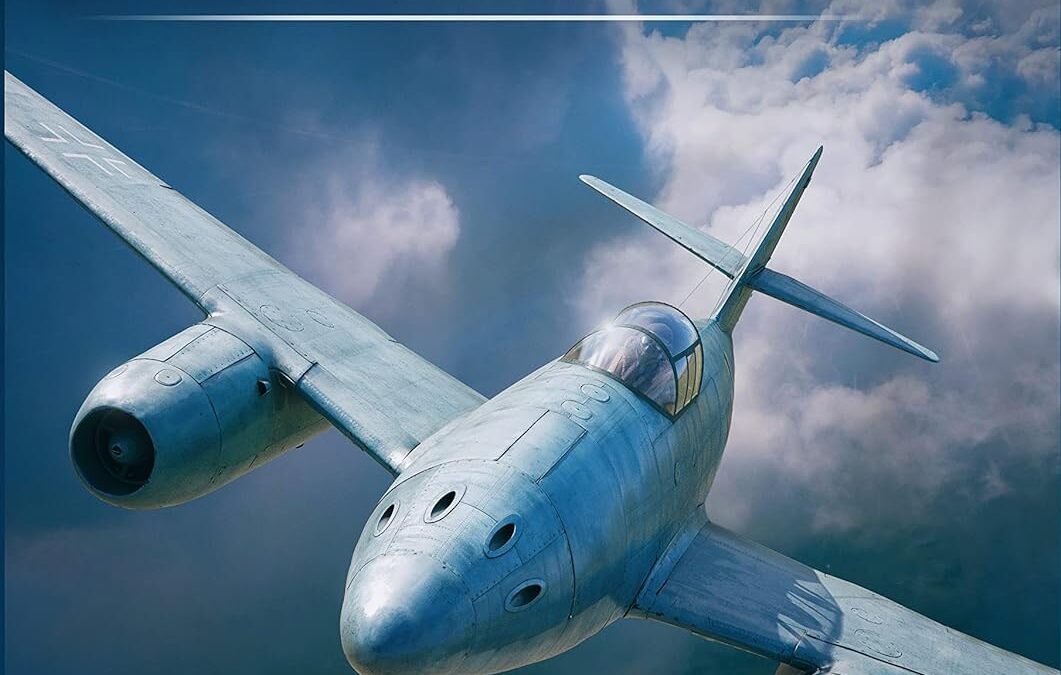
Dan Sharp examines the aircraft’s technical development in unparalleled detail as well as analyzing the ongoing discussions surrounding the Me 262 at the highest levels within the Messerschmitt company, the German Air Ministry and Adolf Hitler’s inner circle.
There are many myths surrounding the development of the Messerschmitt Me 262 jet fighter. Its unparalleled performance is beyond doubt; easily able to outpace its opponents and possessing the firepower to shred them in seconds. Yet immediately after the Second World War, rumours abounded that official indifference, technical shortcomings and interference from the Führer himself had crippled the Me 262’s progress and delayed its appearance on the front line until it was far too late.
Begun as a series of design concepts during 1938, the fighter would not enter mass production until the spring of 1944. Even then it failed to make any notable impact until the closing weeks of the war, when Me 262s began destroying USAAF bombers at an alarming rate. Exactly what happened to cause this apparently late start and who was responsible has until now been largely a matter of conjecture.
Grounded in research involving thousands of wartime documents spread across archival collections in three countries, Messerschmitt Me 262 Development & Politics finally sweeps aside the myths and provides a clear understanding of the real history. Sharp examines the aircraft’s technical development in unparalleled detail as well as analysing the ongoing discussions surrounding the Me 262 at the highest levels within the Messerschmitt company, the German Air Ministry and Adolf Hitler’s inner circle.
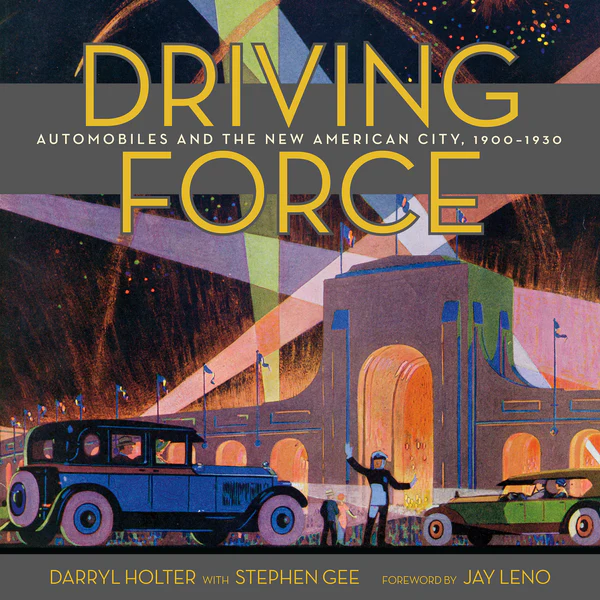
Driving Force: Automobiles and the New American City 1900-1930 (Angel City Press) explores how Los
Angeles’s enigmatic car culture propelled the explosive growth of America’s passion for cars. And with thoroughly researched text and page-after-page of vintage images, it shows how roadblocks that limited the sales of automobiles in the rest of the country, were eliminated in a new-thinking city in the earliest days of the car industry.
At the dawn of the twentieth century, as Los Angeles transformed from a rugged outpost to a booming metropolis, so too did the fledgling automobile simultaneously come of age. Ignited by an unlikely and visionary mix of entrepreneurs who ventured into unknown territory, early adopters broadened the market and convinced the public that cars were no longer a luxury—they were the ultimate modern necessity. From these early enthusiasts, men and women in various business recognized that the automobile would change society and wanted a piece of that action. The city’s auto business emerged initially among bicycle shop owners, carriage retailers, and automobile aficionados who started selling—and repairing!—cars. Their workshops thrived, expanded, and eventually became dealerships, the key component to the auto boom.
In this first major history of dealers at work—and one of the first books to chronicle the early history of cars in Los Angeles—authors Darryl Holter and Stephen Gee share the untold story of pioneering automobile dealers who seized the chance to join a start-up industry that reinvented an American city. Some became wealthy and powerful, others failed. But the lure of the automobile never wavered.
The L.A. dealers helped change the way cars were sold. They championed selling cars on credit while accepting“used cars” that buyers “traded in” so they could buy a new one. They introduced the West Coast to the concept of dealerships with service bays for on-site car repairs; persuaded manufacturers to design cars to their specifications and created custom vehicles and innovations that were copied around the country.
With more than 150 spectacular vintage images—many never before published—Driving Force brings to life the people who made the automobile an icon of the modern American city. In its pages, readers will discover how the story of the automobile is interwoven with Southern California’s unique topography and sun-drenched climate; a new era of women’s rights, and a growing female influence on automobile design; the creation of the Los Angeles Auto Show and the remarkable 1929 fire that threatened to destroy it; and how car dealers launched renowned L.A. radio and television stations, including KNX, KFI, and KCBS-KCAL.
As car collector extraordinaire Jay Leno explains in his Foreword to Driving Force, “Darryl Holter shows that auto retailers connected manufacturers to buyers, changing America and shaping the history, economy, and culture of Los Angeles.”
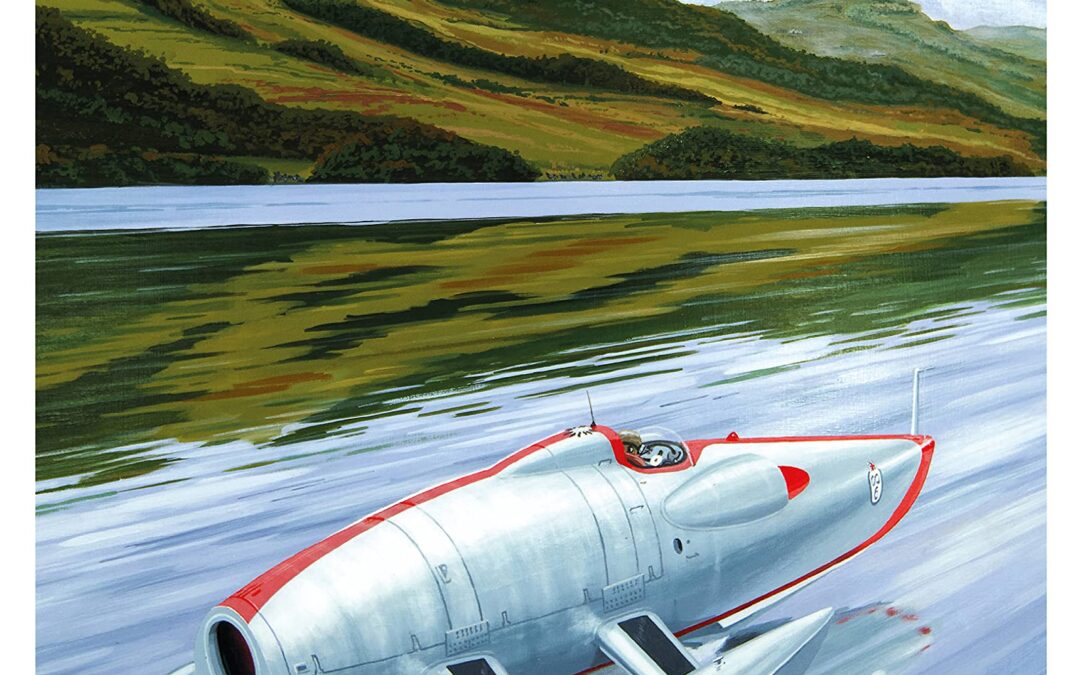
he tale of Crusader, the jet-powered boat of 1952, appears to be a simple one about the ambition of John Cobb and Reid Railton, two unassuming but deeply gifted men, to break the water speed record on Loch Ness only for their efforts to end in tragedy. In fact the story behind that fateful outcome — Cobb’s death on his first high-speed run — is a complex web of clever design and inspirational endeavour mixed with personality clashes and errors of judgment. After many years of research, including access to a wealth of original documentation, Steve Holter unravels the entire saga of the ill-fated Crusader and presents a compelling detective story.
- John Cobb: the modest businessman with such a thirst for speed that he wanted to become the fastest man on water as well as on wheels after setting his land speed record of 396.196mph in 1947.
- Reid Railton: inspired designer and long-time friend behind Cobb’s greatest speed accomplishments, notably with the Napier-Railton (holder of the lap record at Brooklands) and the Railton Mobil Special (land speed record car).
- In-depth study of Railton’s innovative ‘three-point’ hull design for Crusader, with two rear sponsons and a single ‘planing shoe’ at the front — plus a De Havilland Ghost jet engine delivering 5,000lb of thrust.
- Evolution of the design in parallel with testing of scale models, including a miniature jet-powered version evaluated near Portsmouth Harbour.
- Assessment and description of boat-builder Vosper’s wooden construction, under Peter Du Cane’s direction.
- An exhaustive account of proceedings at Loch Ness, where Cobb finally attempted a high-speed run on 29 September 1952 and achieved 206.89mph, faster than anyone had previously gone on water.
- Analysis of the structural failure that destroyed Crusader and killed Cobb.
Much of the story is told in the words of the key protagonists, drawing in particular on correspondence and written accounts from the key people involved, most notably John Cobb, Reid Railton and Peter Du Cane.
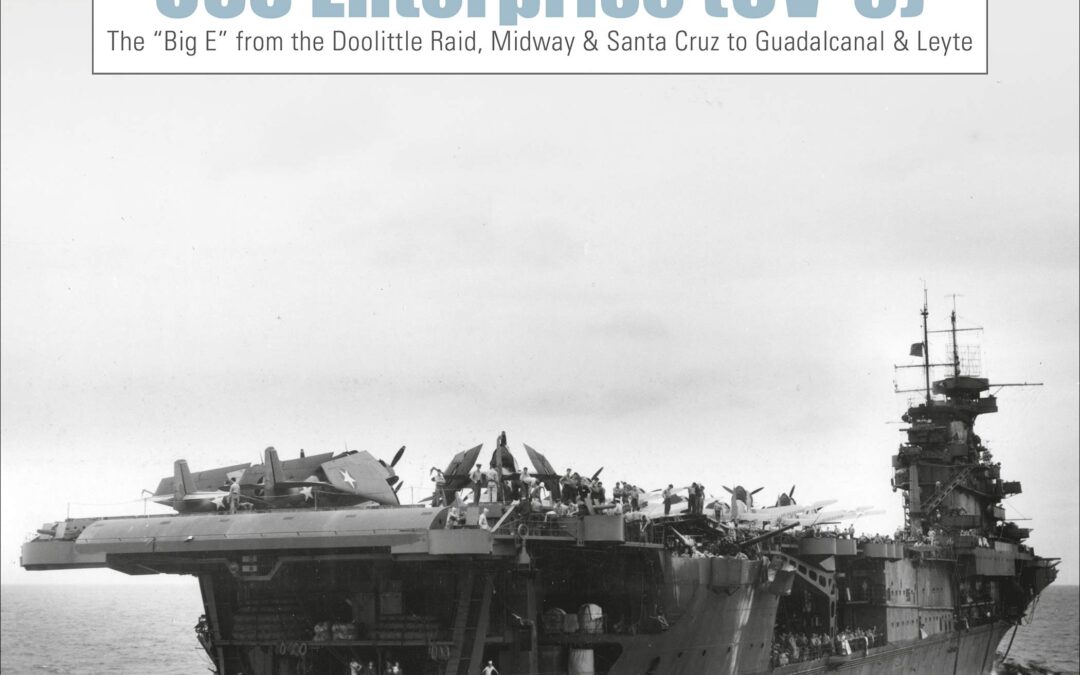
Though it barely missed being caught and destroyed at Pearl Harbor on December 7, 1941, the US Navy’s USS Enterprise (CV-6) aircraft carrier took part in every major action of the Pacific War, from the Doolittle Raid to the battles of Midway, Santa Cruz, and Guadalcanal to the Philippine Sea and Leyte. Affectionately known as the “Big E,” as well as as the “fightingest ship in the Navy,” the Enterprise racked up one of the most impressive tallies of damage to the enemy of any Allied warship during WWII. This book explores Enterprise‘s design and construction, wartime activities, and ultimate postwar decommissioning and scrapping through carefully researched photos, many of which have never before been published. The clarity and large size of many of the photos, coupled with descriptive and informative captions, put the reader on the deck of this historic warship throughout its famed history.
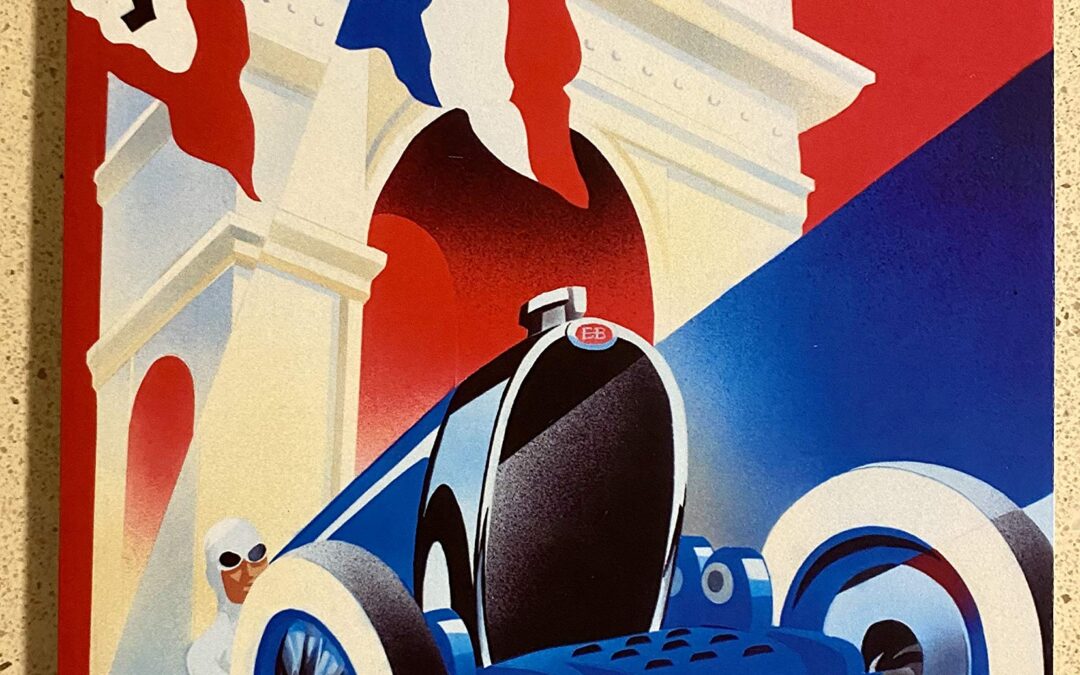
We are true to history: A Bugatti race car driver became a hero of the French Resistance. When German occupiers – in 1942 – seize his factory to build weapons, Ettore Bugatti, a lofty artisan/engineer, wants only to preserve his empire to again make the most beautiful cars the world has ever seen. Driver Alexander Graves, racer and patriot, is thrown into conflict with his revered “Patron.” Can Alexander destroy explosive torpedoes bound for U-Boat ports to sink Allied ships without leveling the factory? Can he save Claire, who no man says ‘no’ to, from her reckless plan to help liberate a stricken nation? With a mechanics ingenuity and with matchless skill behind a Bugatti’s wood-rimmed steering wheel, Alexander starts the race of his life.
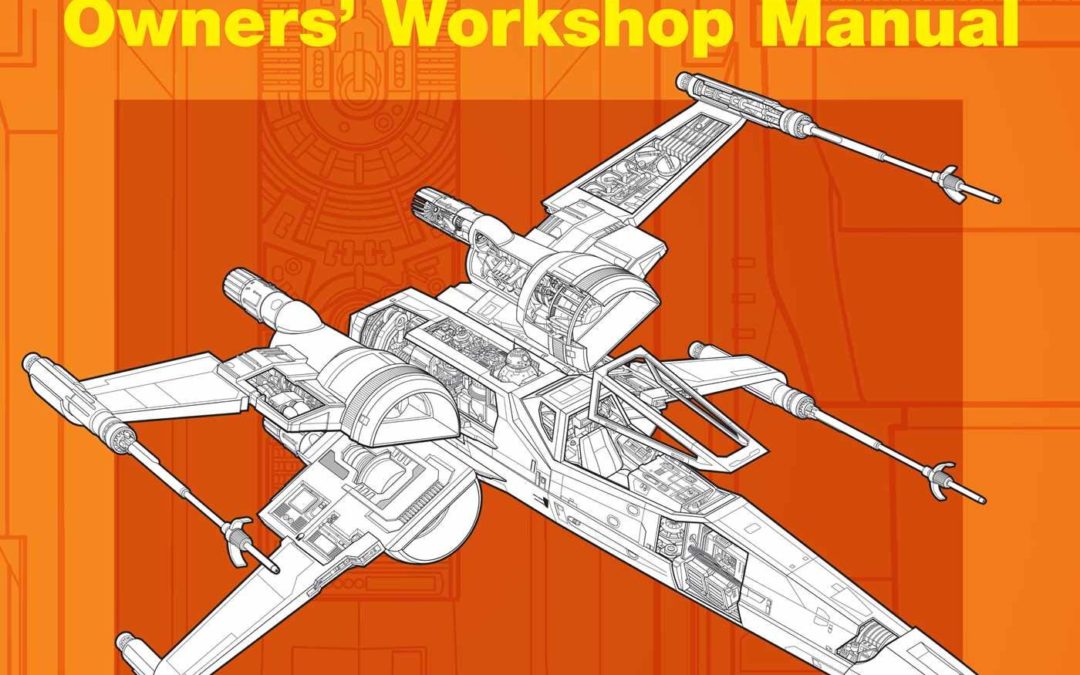
After the Clone Wars, the Galactic Empire spared no expense to build a massive fleet of warships to enforce Imperial rule, intimidate defenseless worlds, and destroy all opposition. However, the Imperial Navy underestimated Rebel Alliance fighter pilots, who flew X-wing, Y-wing, A-wing, U-wing and B-wing starfighters, and whatever else they could obtain to fight their Imperial enemies. Decades later, Resistance pilots would fly next-generation versions of Rebel starfighters against the First Order.
The Rebel Starfighters Owners’ Workshop Manual presents a thorough history of the starfighters that served the Rebel Alliance and the Resistance. The history includes design origins, production, and modifications for each Rebel starfighter, and is fully illustrated with numerous photographs, schematics, exploded diagrams, and computer-generated artwork by Star Wars vehicle experts Chris Reiff and Chris Trevas. Text is by Ryder Windham, author and co-author of more than 70 Star Wars books. This Haynes Manual is the most thorough technical guide to Rebel starfighters available, and is fully authorized and approved by Lucasfilm.
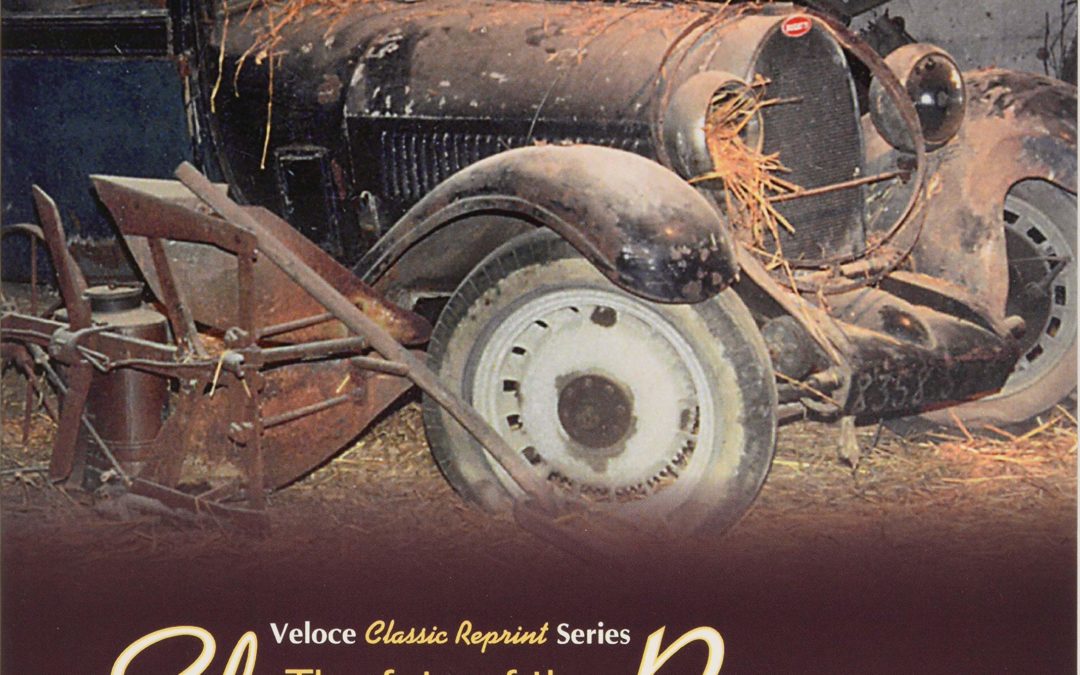
Say ‘Sleeping Beauties’ to committed car enthusiasts and they will immediately know what you’re talking about: a world famous 1980s photo series, showing an extraordinary collection of classical automobiles rusting away in a French barn, neglected by their owner. Famous brands like Bugatti, Lancia, Ferrari, Alfa Romeo, Cord and Aston Martin, laying under thick layers of dust, spending their remaining days falling apart in isolation.
Many have tried to find out what happened to these cars since the photographs were taken – decayed? destroyed? sold? – but all leads fizzled out … until two Dutchmen and a German hung on where others had given up. In true ‘Boy’s Own’ style, their book tells of the three-year-long search for the fate of the cars from that French barn. It tells the story behind the collection’s origins in 1948, through to the moment in 1983 when the famous photos were published, up to the day in 2007 when the authors talked to the current 79 year old owner – a man who finally broke his silence about the fate of his collection for the first time in 25 years.
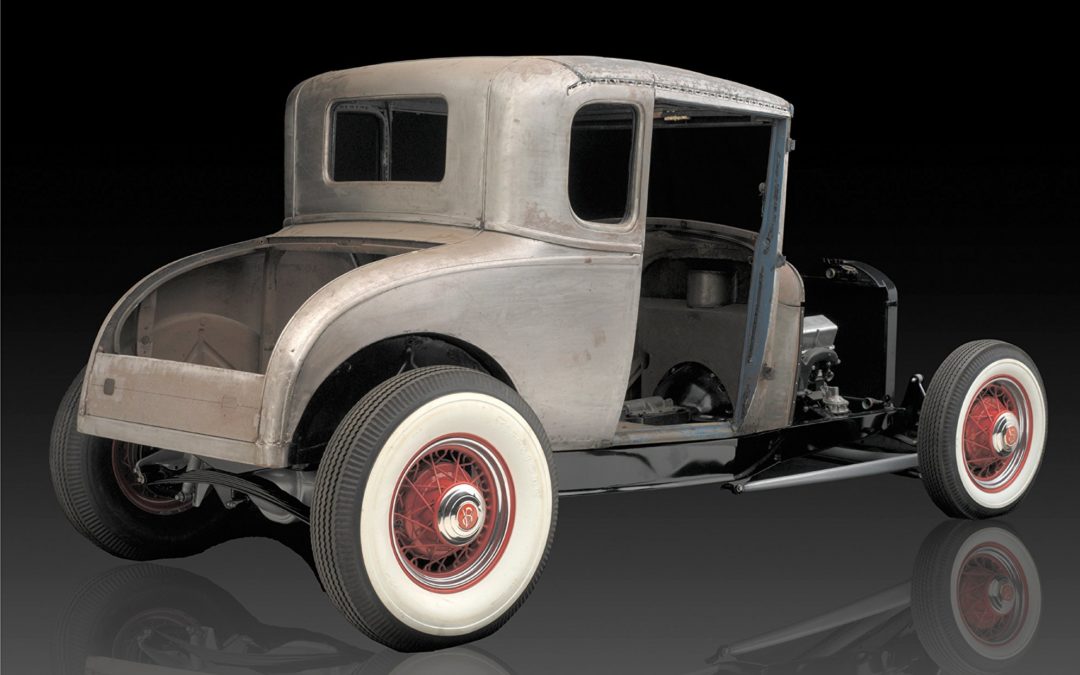
You’re building a hot rod. The first step is the chassis. If it’s not right, the car won’t handle well. If it’s really not right, the car might destroy itself. There are choices to be made, from frame rails to suspension components, and some combinations will work better than others. Next is the body. This is what everyone sees first. It’s what makes a hot rod a hot rod. This book is a sure-fire guide to the best approach. Veteran builder and writer Dennis Parks walks you through the whole process, from finding and using existing panels to choosing New Old Stock panels from the aftermarket. The Hot Rod Body and Chassis Builder’s Guide offers fool-proof advice for building the hot rod of your dreams.
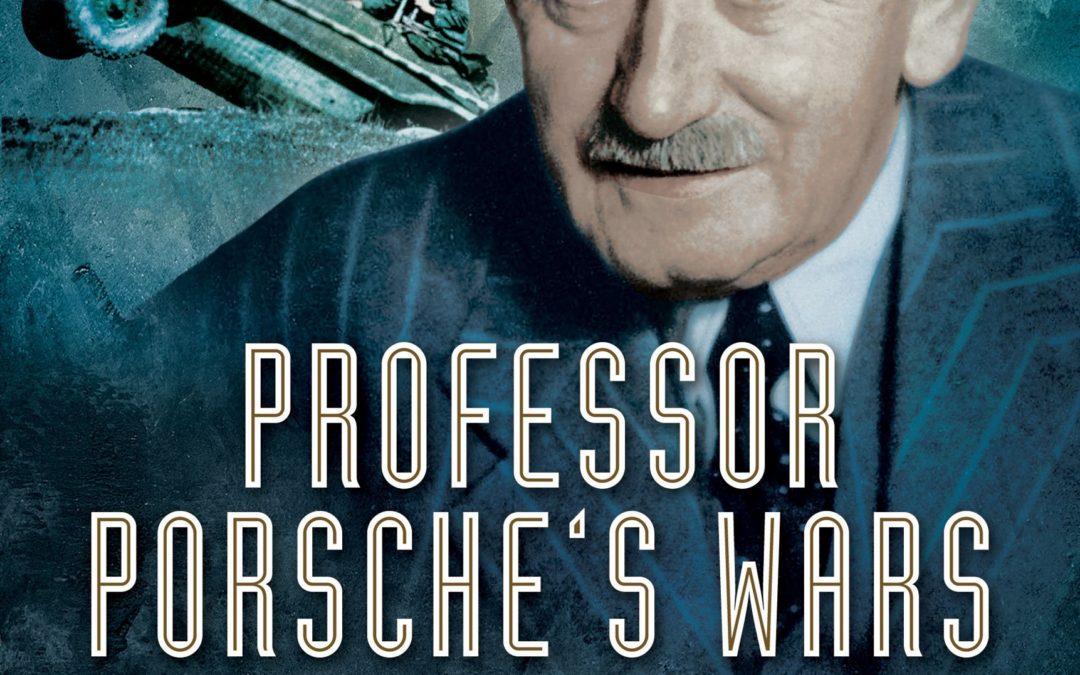
Regarded as one of the great automotive engineers of the twentieth century, Ferdinand Porsche is well remembered today for his remarkable automotive designs including the Volkswagen Beetle and Auto Union Grand Prix cars. Yet there is another side to his extraordinary career, for he was an equally inventive designer of military vehicles and machinery. In this field too he excelled. Indeed the sheer versatility of his contribution is astonishing. Karl Ludvigsen’s study is the definitive guide.
He tells the complete story, focusing on Porsche’s relations with the German armed forces and on the stream of advanced designs he was responsible for. Included are Austro Daimler’s pioneering aero engines, the Kübelwagen, Schwimmwagen, Type 100 Leopard tank, Ferdinand or Elefant tank destroyer and the astounding Type 205 Maus tank. He also describes Porsche’s creative work on aero engines, tank engines and even a turbojet for the V-1 flying bomb.
Karl Ludvigsen’s account confirms the preeminence of Ferdinand Porsche as a brilliant and prolific engineer, one of the most remarkable of his generation.
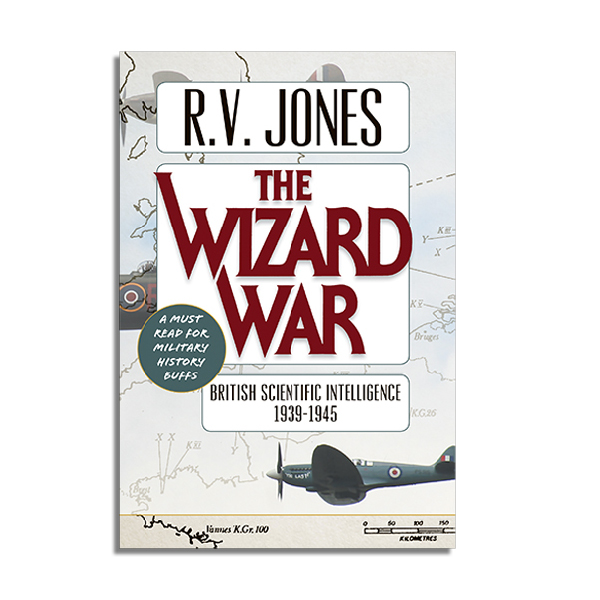
British Scientific Intelligence 1939-1945
In this dramatic first-hand account of military intelligence triumphs, secretive detective work, and true-life espionage dramas, R.V. Jones reveals the true story of the vital role the scientific community played during World War II.
At 28 years old, Jones was summoned by Churchill to be a part of the clandestine British Scientific Intelligence community at Whitehall in London. From 1939 to 1945, Jones and his colleagues were tasked with coming up with countermeasures to German applications of science in the war. Projects he worked on during this “Wizard War,” as Churchill called their efforts, sought to find technical ways to combat Germany’s applications of science during the war, including newly developed navigational beams, chaff, and radar.
Jones was directly responsible for breaking Germany’s navigational beam system, which Luftwaffe bombers had been using to destroy British targets with devastating accuracy. This success with the “Battle of the Beams” proved critical in the outcome of the Battle of Britain. He also devised defenses against deadly German retaliation weapons such as the V-1 flying bomb and the V-2 rocket, as well as their nascent nuclear weaponry developments. His work with radar enabled the success of the Allied bomber offensive, played a key role in preparations for D-Day, and helped the Allies achieve ultimate victory.
This highly acclaimed memoir is a masterpiece of British military history. With abundant humor, humility, and details, Jones offers a riveting insider’s perspective on the scientific achievements and strategic decisions made during the Second World War

The German A4 rocket, or V2 – ‘Vergeltungswaffen Zwei’ (Vengeance Weapon 2), was the most sophisticated and advanced weapon developed in Europe during the Second World War. From September 1944 to March 1945, German army launch teams fired more than 3,000 V2 rockets at targets in England, France, Belgium and even within Germany itself. Many V2s were fired from mobile launch sites and from concealed wooded areas, using fleets of transporters and trailers with sophisticated ancillary and support vehicles. Traveling at the edge of space, the V2 rockets fell without warning at supersonic speeds, turning buildings and streets into cratered rubble, and terrorizing the civilians targeted by these attacks.
Drawing on a wide range of archive sources, rare personal accounts and interviews conducted with personnel associated with the A4/V2 program, rocketry expert Murray R. Barber traces the origins of the V2 and presents a detailed view of the research conducted at the secret, experimental rocket-testing facility at Kummersdorf West and the vast, infamous base at Peenemunde. This important new work reveals the transformation of the rocket into a weapon of war and describes the A4 in detail as well as the intense and often difficult intelligence effort by the Allies to discover more about this highly secret and unprecedented weapon, and to destroy it.
The author also describes the field-testing of the A4 rocket, its reliability problems and the remedies and compromises employed to deal with them. He reveals the activities of the SS and their machinations to gain control of the rocket program from the Wehrmacht, as well as the subsequent operational deployment of the V2 in Operation Penguin, the ‘vengeance’ offensive against the British Isles.
Illustrated throughout with rare and many previously unseen images (including color photographs), technical drawings and maps, this is the most comprehensive book ever on the V2, and includes important new details of the post-war development and testing of the rocket and its role in the dawning of the space age.














